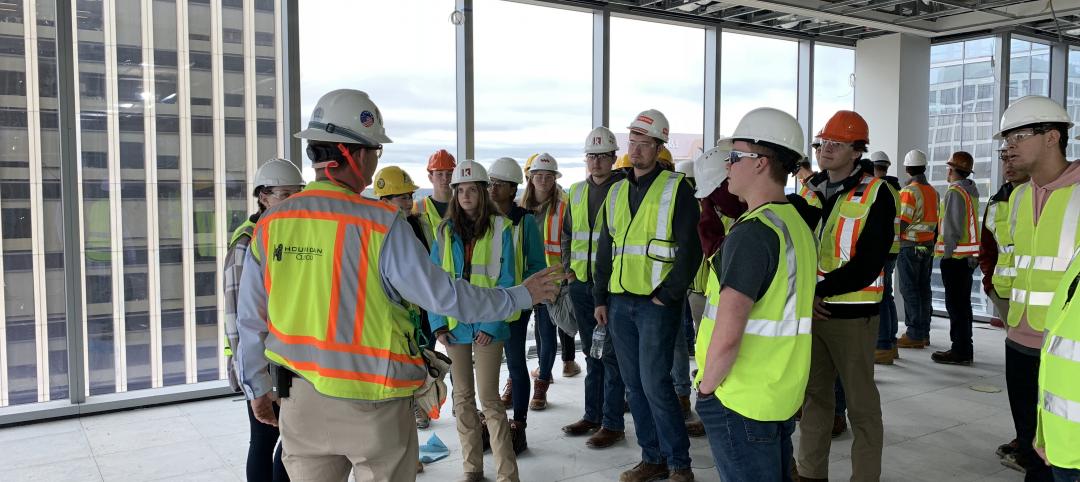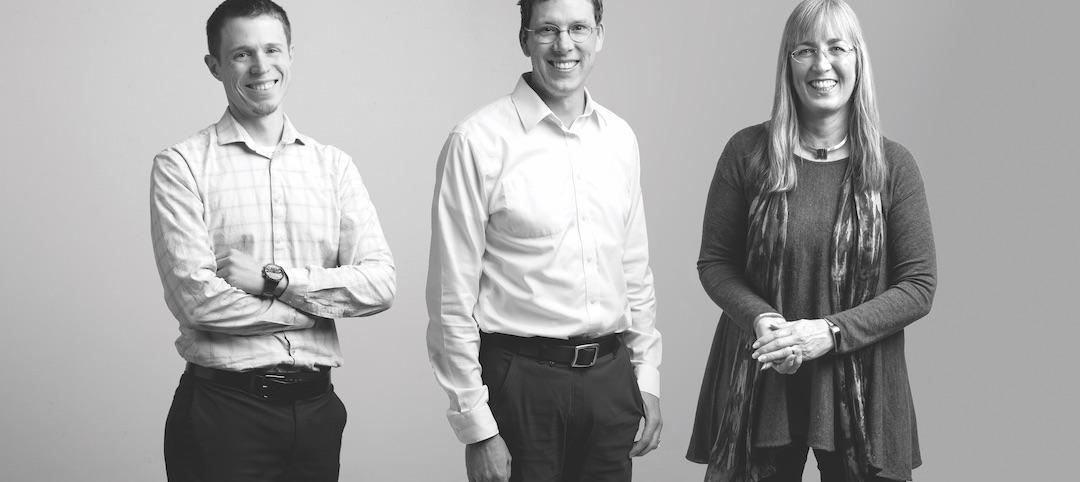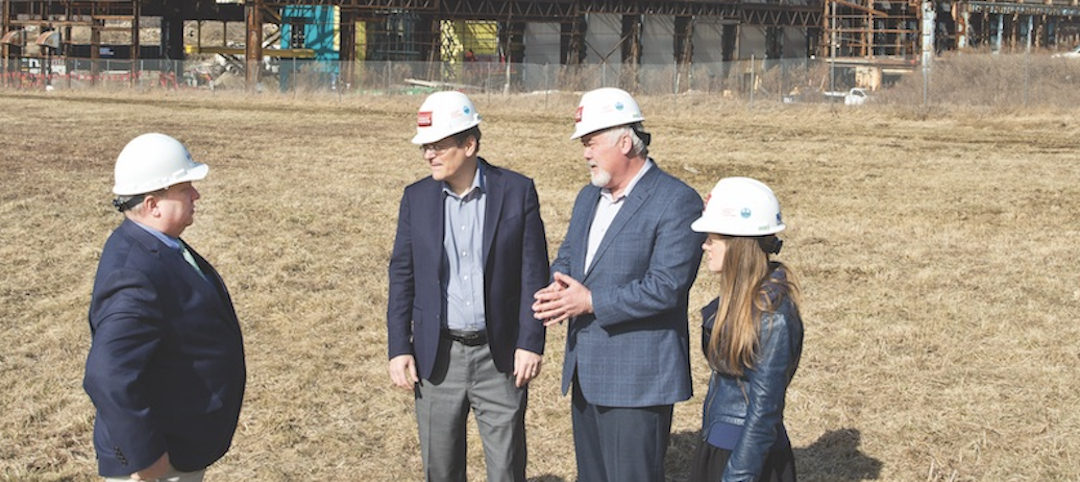This spring, Emily Griffith Technical College in Denver, one of the country’s oldest such institutions, will take another step into the 21st century by offering courses in its Construction Careers Now program that incorporate virtual reality to train students how to work in high-citation safety areas on construction sites. The school will also use VR in its nursing program to simulate real-life healthcare and emergency situations.
Emily Griffith is collaborating with STRIVR, a three-year-old company based in Menlo Park, Calif., that deploys virtual reality software to create personalized and repeatable training experiences for users to hone their skills.
STRIVR is best known for the immersive VR training programs it has developed for college and professional sports teams. More recently, it has diversified its client base to include companies like Walmart, with which it created VR programs for the retail giant’s employees to improve its stores’ security, customer service, and operational efficiency.
Another new client, the financial services firm Fidelity, has been testing VR-enhanced empathy training for its call center associates.
“Learning by doing is the best form of learning,” says Derek Belch, STRIVR’s CEO. “Our mission is to empower people to perform at their best.”
STRIVR is spreading its wings at a time when more AEC firms are taking a closer look at how they might use VR to produce better buildings. The startup’s technology, say its executives, takes VR users beyond the parameters of design into the realm of immersive behavioral training that can help companies elevate the mechanical or managerial proficiencies of any employee, from a plumber to a practice leader.
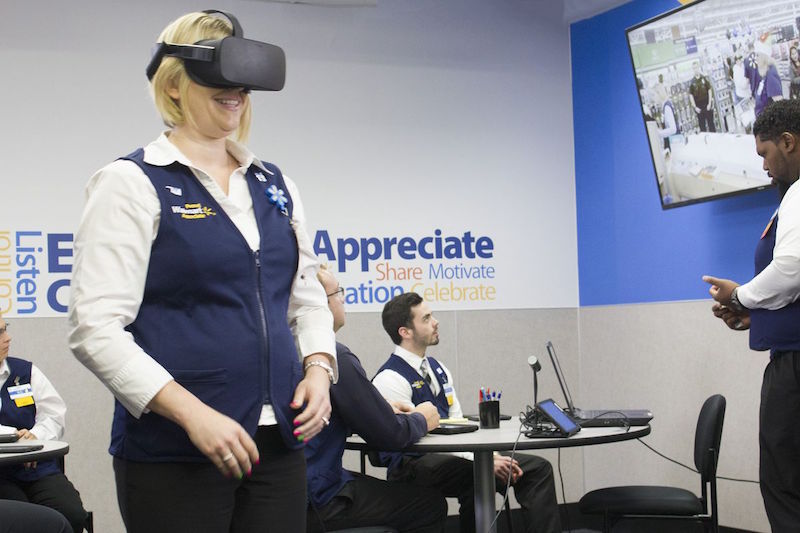 Walmart’s training academies across the country have incorporated VR into a curriculum produced by STRIVR. The program asks employees to make simple choices based on real-world scenarios they experience through an Oculus Rift. The retail giant has plans to expand the program to all of its stores. Courtesy Walmart.
Walmart’s training academies across the country have incorporated VR into a curriculum produced by STRIVR. The program asks employees to make simple choices based on real-world scenarios they experience through an Oculus Rift. The retail giant has plans to expand the program to all of its stores. Courtesy Walmart.
Simulating real life to train or heal
Belch co-founded STRIVR in 2015 with Jeremy Bailenson, a leading expert on VR and Thomas More Storke Professor in the Department of Communications at Stanford University. There, Bailenson is also Faculty Director of its Digital Learning Forum and the Founding Director of the university’s Virtual Human Interaction Lab (VHIL).
VHIL’s mission, says Bailenson, is to understand the dynamics and implications of interactions among people in immersive VR simulations. “Our work is centered on using empirical, behavioral science methodologies to explore people as they interact in these digital worlds,” he says. The goal is to apply VR as a basic research tool to improve everyday life, such as conversation, empathy, and communication systems.
Its projects have used VR to examine, among other things, racism, childhood development, and empathy, often by creating avatars that allow users to understand how being “someone else”—for example, a caucasian male seeing himself as a minority female—changes how one thinks and feels in the real world.
VHIL has researched how VR can help patients recover from injuries faster by placing them in an immersive and aspirational environment where their bodies perform beyond their current physical limitations.
In 2014, prior to launching STRIVR, Bailenson and Belch—a Stanford alumnus and former kicker on the school’s football team—tested their technology by developing a virtual training regimen that recreated game-like situations for the team’s quarterback, Kevin Hogan.
Hogan’s training included donning a VR headset for about 12 minutes before each game. The results were remarkable: after the VR-based training, Hogan’s pass-completion rate shot up to 76%, compared to 64% before VR. The team’s total offense improved to 38 points per game, from 24. And its red-zone scoring proficiency rose to 100%, from 50%.
“So, for simulations where you get to embody someone else (or something else), or simulations where movement is especially impactful (training, therapy, etc.), VR is a game changer,” says Bailenson.
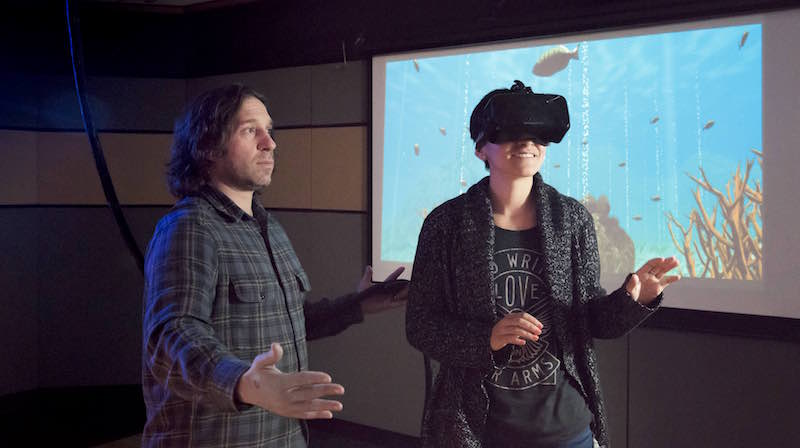 TRIVR Co-founder Jeremy Bailenson is also the Founding Director of Stanford University’s Virtual Human Interaction Lab. Here, he walks a VR user through one of the lab’s custom interactive programs. Courtesy: Linda A. Cicero / Stanford.
TRIVR Co-founder Jeremy Bailenson is also the Founding Director of Stanford University’s Virtual Human Interaction Lab. Here, he walks a VR user through one of the lab’s custom interactive programs. Courtesy: Linda A. Cicero / Stanford.
VR attracts AEC interest for design and construction coordination
Notwithstanding critics who carp that his research sidesteps possible negative uses of VR, Bailenson optimistically foresees VR’s future focusing on training and “experience on demand.” He sees no reason why VR can’t benefit the AEC industry. “The overall feeling of ‘being’ in a new place without having to build it to test the design principals is a great application,” he suggests.
Dozens of AEC firms—including Gensler, Ennead Architects, Arup, and SHoP Architects—already incorporate VR into their practices’ work and collaborations. And the industry’s interest is growing. In January, representatives from firms that included Stantec and Robert A.M. Stern Architects attended a presentation in New York City set up by Microdesk to show how different design software, game engines, and VR platforms work together.
A year ago, Stephen Paul, Visualization Manager in AECOM’s Minneapolis, Minn., office, was having trouble getting coworkers at his firm excited about VR. “Now I have people lined up outside my door,” he says. Paul attributes the change in mindset at AECOM, in part, to the introduction of easier-to-use VR instruments, like Rift and Google Cardboard, “that put everything within the consumer’s reach.”
He says AECOM is finding new ways to use VR every day. It recently built a module for hydrostatic testing of pipelines in Canada, and used a VR videogame that it ran through Vive, a VR platform, as a tool whose functions allowed users to “adjust” the pipes. Paul says his Viz Studio is also working on “slip, trip, and fall” training with virtual obstacles on a construction site.
Paul has written about using VR to give people—particularly doubters—a better appreciation of the potential damage from climate change, by placing them in a virtual environment washed away by a 100- or 500-year flood. (One of VHIL’s landmark studies involved creating a VR environment to inform users about deforestation.)
Vive is a product of HTC Corp., with which AECOM recently entered into a long-term partnership to develop and extend the reach of VR to benefit the AEC industry. “Virtual reality has the potential to be the biggest paradigm shift in history for architects, engineers, and designers,” M. Sean Chiao, AECOM’s President–Asia Pacific, said when the deal was announced.
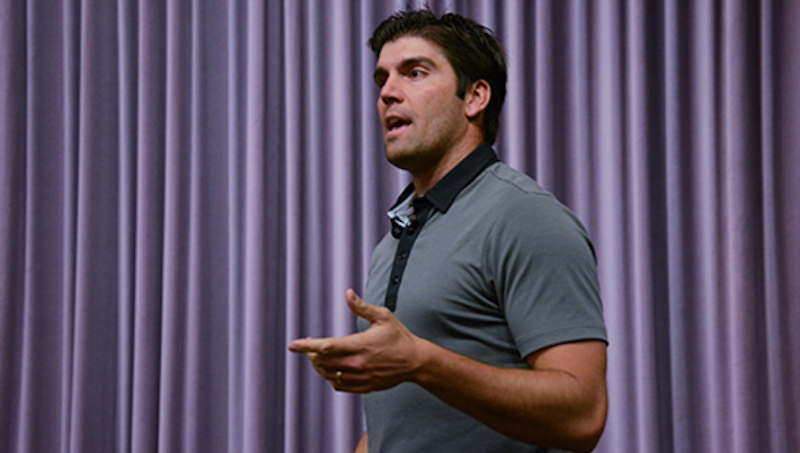 Derek Belch, STRIVR’s Co-founder and CEO, demonstrates the firm’s technology to Stanford University students. Linda A. Cicero / Stanford.
Derek Belch, STRIVR’s Co-founder and CEO, demonstrates the firm’s technology to Stanford University students. Linda A. Cicero / Stanford.
VR will familiarize students with jobsites
“Great training can happen at a moment’s notice” within virtual reality, proclaims Michael Casale, PhD, STRIVR’s Chief Science Officer. And as the software becomes more sophisticated, users will have even more control over their virtual experiences.
Casale is convinced VR can be a useful tool for architects and contractors who want to see things “in the right spatial context, and make decisions accordingly.”
But when asked what’s holding back VR from wider application by the AEC community, Casale acknowledges that the equipment is still clunky, and interactions and movement within VR environments “are still pretty limited.”
Belch thinks a bigger impediment is organizational. AEC firms, he asserts, “need to embrace VR training as the future and adjust their routines and activities around it, rather than trying to make VR fit into what they currently do.”
That being said, the appetite for VR is piqued. International Data Corporation recently forecast that worldwide spending for VR and augmented reality products and services would double in each of the next four years, to $215 billion in 2021. In the U.S. alone, VR/AR spending is projected to increase at a compound annual rate of 120%.
STRIVR plans this year to expand its platform to more business sectors. Casale believes VR could be particularly helpful in management leadership training. And he points to STRIVR’s relationship with Emily Griffith Technical College as evidence of VR’s applicability to the construction field.
Jeff Barratt, the college’s Executive Director, tells BD+C that the virtual construction site for its courses would place students in situations where they must navigate such potential dangers as open trenches or impalement objects. To create this environment, Emily Griffith connected STRIVR with contractors doing work near Denver’s airport, where STRIVR captured its imagery. The videography, software, and hardware cost north of $100,000, of which the college contributed $10,000. The school’s Foundation raised the balance from donors.
The college also runs a high school, and Barratt says VR can give younger students a “taste” of a construction site before they turn 18 and are legally allowed to be on one.
Barratt says the college and STRIVR have been talking about developing a revenue-sharing model for future VR-enhanced training programs, which might include skills training for construction and culinary students.
“VR would let them learn before and after an actual demonstration,” says Barratt.
Related Stories
Women in Design+Construction | Jan 25, 2024
40 Under 40 Class of 2023 winner Kimberly Dowdell inaugurated as AIA 2024 President
The American Institute of Architects (AIA) has announced the inauguration of Kimberly Dowdell, AIA, NOMAC, NCARB, LEED AP BD+C, Principal and Director of Strategic Relationships at HOK and BD+C 40 Under 40 superstar, as its 100th president.
AEC Innovators | Mar 3, 2023
Meet BD+C's 2023 AEC Innovators
More than ever, AEC firms and their suppliers are wedding innovation with corporate responsibility. How they are addressing climate change usually gets the headlines. But as the following articles in our AEC Innovators package chronicle, companies are attempting to make an impact as well on the integrity of their supply chains, the reduction of construction waste, and answering calls for more affordable housing and homeless shelters. As often as not, these companies are partnering with municipalities and nonprofit interest groups to help guide their production.
AEC Innovators | Feb 28, 2023
Meet the 'urban miner' who is rethinking how we deconstruct and reuse buildings
New Horizon Urban Mining, a demolition firm in the Netherlands, has hitched its business model to construction materials recycling. It's plan: deconstruct buildings and infrastructure and sell the building products for reuse in new construction. New Horizon and its Founder Michel Baars have been named 2023 AEC Innovators by Building Design+Construction editors.
40 Under 40 | Oct 19, 2022
Meet the 40 Under 40 class of 2022
Each year, the editors of Building Design+Construction honor 40 architects engineers, contractors, and real estate developers as BD+C 40 Under 40 awards winners. These AEC professionals are recognized for their career achievements, passion for the AEC profession, involvement with AEC industry organizations, and service to their communities.
Movers+Shapers | Nov 7, 2021
Passage of $1.2 trillion infrastructure bill expected to spur stronger construction activity
AEC firms see federal investment as historic
Movers+Shapers | Apr 30, 2020
College programs help prepare students for careers in the construction industry
Universities with AEC programs hone their curricula and research to prepare students to hit the ground running in the construction industry.
Movers+Shapers | Apr 21, 2020
Management Training: AEC firms bring students into the real world
Students benefit substantively from internships offered by AEC firms.
Movers+Shapers | Apr 17, 2020
Meet the ‘AEC outsiders’ who are helping to push the industry into the new decade
AEC professionals have enough on their plates without becoming specialists in a new skill outside of their wheelhouse.
Movers+Shapers | Apr 15, 2020
Buildings as "open source platforms"
NBBJ’s year-old Design Performance Group helps building teams make smarter choices earlier.
Movers+Shapers | Apr 23, 2019
Steely resolve: Carnegie Mellon University fuels Pittsburgh's post-industrial reinvention
After the steel industry started collapsing in the late 1970s, Pittsburgh has been reinventing itself as a science, medical, and academic hub.








